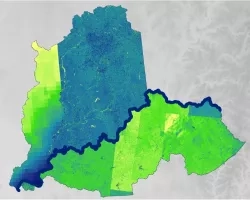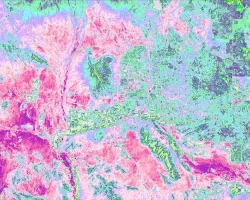Displaying 101 - 110 of 503
Topic
The National Park Service (NPS) currently utilizes an interagency network of in situ aerosol monitoring stations to estimate light extinction and determine visibility across the...

Topic
Changing lake conditions, such as rising temperatures and phosphorus cycling by invasive Dreissenid mussels, have made washup of the green macroalgae Cladophora glomerata a consistent...

Topic
The grasslands of the Great Plains that span the Dakotas and Nebraska are crucial for the region’s agriculture and livestock grazing. In the face of...

Topic
Bighorn sheep are a charismatic desert species that have enormous ecological and cultural significance to the Mojave Desert region in California. After overcoming large population...

Topic
The urban heat island (UHI) effect occurs when non-vegetated surfaces trap heat during daylight hours, increasing the overall temperature of urbanized cities relative to adjacent...

Topic
The Ohio River provides the 13-state region of the Ohio River Valley with economic and social benefits through power generation, industrial manufacturing, drinking water, and...

Topic
The Osa Peninsula, located in the southern region of Costa Rica’s Pacific coast, is one of the most biologically diverse places on Earth. NASA DEVELOP...

Topic
Located in the northern Sonoran Desert, Tempe, Arizona, regularly experiences extreme heat, with summer daily maximum temperatures reaching over 100°F. The rapid urbanization of the...

Topic
Crop wild relatives (CWR) are genetically related to cultivated crops and function as repositories for genetic diversity. These plants have the potential to improve the...

Topic
The town of Ajax, Ontario received a report from Specialists in Energy, Nuclear and Environmental Sciences (SENES) Consultants detailing the likely changes in local weather...